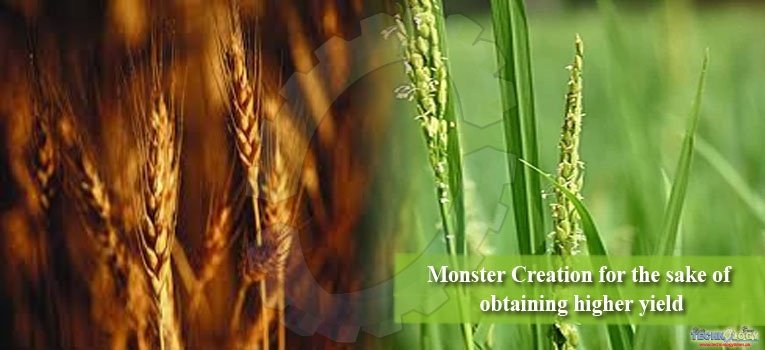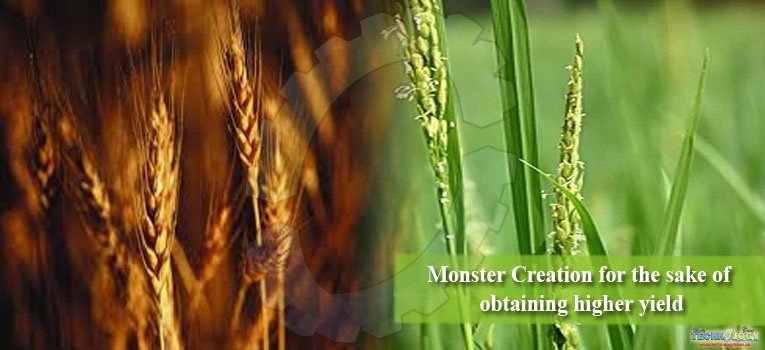Agriculture: It is the science or practice of farming, including cultivation of the soil for the growing of crops and the rearing of animals to provide food, wool, and other products.

Agriculture plays vital role for economy of Pakistan and its development: 48% of labor force is engaged directly with agriculture. Therefore, it is the main source of living or income of the major part of economy population. About 70% of population is relates to agriculture directly or indirectly.
Role of Agriculture: Agriculture is the major source of food of huge population of Pakistan and a source of employment directly or indirectly. It is the major sector which is meeting the increasing requirement of food. Agriculture is also the major source of provision of raw martial to industrial sector.
Major exports or cash crops of Pakistan are wheat, rice and cotton. 9.8 billion Bales of cotton are produced per year. This foreign exchange is utilized for the import of industrial or technological equipment’s such as machinery or automobiles and is utilized to improve the infrastructure of economy or for improving the other sector of economy like education, health and investments.
Dependency on chemicals: World population is growing rapidly and is expected to reach 9 billion in 2040. Due to this population explosion and the changing diets of people there is an expected increase in the demand of food by 70% in 2050. In the desire to increase agricultural yield farmers have been using chemicals such as fertilizers, pesticides, insecticides, herbicides etc.
Use of chemicals/pesticides without identification of disease: Farmers facing problem of pests or diseases in their fields, do not have much time and money for the identification of disease by a qualified person. Therefore, he may uses the previous year pesticides or buy cheap chemicals from local shop.
Excessive application of chemicals: Farmers sometimes apply more fertilizers/pesticides for good crop health leading to waterway pollution, chemical burn to crops, increased air pollution, acidification of the soil and mineral depletion of the soil.
Surface Ozone formation and Acid Rain: Excessive use of fertilizers produced oxides of nitrogen that are emitted into the atmosphere. These compounds are then transformed into other dangerous compounds like water vapor, carbon dioxide, methane, hydrogen sulfide (H2S) with chlorofluoro hydrocarbons, such as halon gases and react with each other to form surface ozone layer that is very detrimental to health.
Evaporation of NH3 occurs from alkaline soils that have been treated with ammonium fertilizers. This can cause acid rain eventually after some chemical transformation which can cause damage to animals and vegetation.
Risk to human beings: Talking about human health, studies have shown evidences where farmers exposed to these fertilizers were at risk of giving birth to children with limb defect.
Water Contamination: If fertilizers are applied in excess, they will only end up contaminating surface and ground water. The problem is accelerated in arid and semi-arid areas where evaporation rate is high. After the fertilizer reaches the depths of the soil, they are converted to nitrates through nitrification by microorganisms. This nitrate is then further taken down to the ground water.
Resistant pests and diseases:
Pesticides are poisons they can harm plants and animals ranging from beneficial soil microorganisms and insects, non-target plants, fish, birds, and other wildlife. Chlorpyrifos, a common contaminant of urban streams is highly toxic to fish, and has caused fish, kills in waterways near treated fields or buildings.
Some herbicides may produce sublethal effects on fish that lessen their chances for survival and threaten the population as a whole. Herbicides may hurt insects or spiders indirectly when they destroy the foliage that these animals need for food and shelter.
The flying fox, short-nosed fruit bat and Indian pipistrelle bat are resident species and are their habitat is mainly agricultural areas, rock caves, and abandoned houses in domesticated areas. Insects constitute an important diet for many bats, allowing the passage of OCs in their body. Several studies found OC pesticides and PCBs in livers and eggs of birds in developed countries.
All life forms have the ability to develop the resistance against pesticides/chemicals. Every new insecticide group, such as cyclodienes, carbamates, formamidines, organophosphates, pyrethroids, even Bacillus thuringiensis, have developed resistance populations of insects or mites within 2 to 20 years. Repeated use of the same class of pesticides to control a pest can cause undesirable changes in the gene pool of a pest leading to another form of artificial selection, pesticide resistance.
When a pesticide is first used, a small proportion of the pest population may survive exposure to the material due to their distinct genetic makeup. These individuals pass along the genes for resistance to the next generation.
Therefore, time will come when these tiny organisms even become more resistant that no human life friendly chemical will affect and because of excessive use of chemicals there will be no marine life/terrestrial animals. Anthropogenic activities are severely altering the environment and creating monsters for their own destination.
